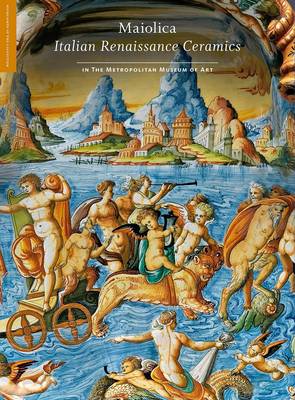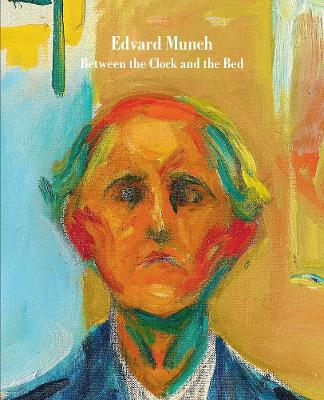Metropolitan Museum of Art (MAA) (YUP)
3 total works
Like Life
by Luke Syson, Sheena Wagstaff, Emerson Bowyer, Brinda Kumar, Schwartz Hillel, and Barti Kher
Published 3 April 2018
Explores how artists from the European Renaissance to the global present have used sculpture and color to evoke the presence of the living body
Since the earliest myths of the sculptor Pygmalion bringing a statue to life through desire, artists have explored the boundaries between sculpture and the physical materiality of the body. This groundbreaking volume examines key sculptural works from 13th-century Europe to the global present, revealing new insights into the strategies artists deploy to blur the distinction between art and life. Sculpture, which has historically taken the human figure as its subject, is presented here in myriad manifestations created by artists ranging from Donatello and Degas to Picasso, Kiki Smith, and Jeff Koons. Featuring works created in traditional media such as wood and marble as well as the unexpected such as wax, metal, and blood, Like Life presents sculpture both conventional and shocking, including effigies, dolls, mannequins, automata, waxworks, and anatomical models. Containing texts by art and cultural historians as well as interviews with contemporary artists, this is a provocative exploration of three-dimensional representations of the human body.
Published by The Metropolitan Museum of Art/Distributed by Yale University Press
Since the earliest myths of the sculptor Pygmalion bringing a statue to life through desire, artists have explored the boundaries between sculpture and the physical materiality of the body. This groundbreaking volume examines key sculptural works from 13th-century Europe to the global present, revealing new insights into the strategies artists deploy to blur the distinction between art and life. Sculpture, which has historically taken the human figure as its subject, is presented here in myriad manifestations created by artists ranging from Donatello and Degas to Picasso, Kiki Smith, and Jeff Koons. Featuring works created in traditional media such as wood and marble as well as the unexpected such as wax, metal, and blood, Like Life presents sculpture both conventional and shocking, including effigies, dolls, mannequins, automata, waxworks, and anatomical models. Containing texts by art and cultural historians as well as interviews with contemporary artists, this is a provocative exploration of three-dimensional representations of the human body.
Published by The Metropolitan Museum of Art/Distributed by Yale University Press
Exhibition Schedule:
The Met Breuer
(03/21/18–07/22/18)
The brightly colored tin-enameled earthenware called maiolica was among the major accomplishments of decorative arts in 16th-century Italy. This in-depth look at the history of maiolica, told through 140 exemplary pieces from the world-class collection at the Metropolitan Museum, offers a new perspective on a major aspect of Italian Renaissance art. Most of the works have never been published and all are newly photographed. The ceramics are featured alongside detailed descriptions of production techniques and a consideration of the social and cultural context, making this an invaluable resource for scholars and collectors. The imaginatively decorated works include an eight-figure group of the Lamentation, the largest and most ambitious piece of sculpture produced in a Renaissance maiolica workshop; pharmacy jars; bella donna plates; and more.
Published by The Metropolitan Museum of Art / Distributed by Yale University Press
Published by The Metropolitan Museum of Art / Distributed by Yale University Press
Exhibition Schedule:
The Metropolitan Museum of Art
(08/29/16–02/26/17)
Edvard Munch
by Gary Garrels, Jon-Ove Steihaug, Sheena Wagstaff, Patricia G. Berman, Caitlin Haskell, and Allison Morehead
Published 4 July 2017
A penetrating reassessment of Munch’s memorable painting and profound artistic legacy
This engaging book offers a fresh look at the exceptional works of Edvard Munch (1863–1944) by examining them in the light of his precarious mental state. Following a nervous breakdown in 1908, Munch underwent electroshock therapy, which prompted a marked change in his art work. The haunting Self-Portrait between the Clock and the Bed, finished one year before his death, represents a culmination of the themes of mortality, isolation, and anxiety that he explored repeatedly, and provides, in these pages, a perfect lens through which to view the artist’s entire oeuvre. Informative essays consider Munch’s position in the art world, his conception of self as a means of experimentation, and the psychological content of his paintings, while a previously unpublished foreword by the celebrated Norwegian novelist Karl Ove Knausgaard offers a new perspective on Munch's life and work. Featuring over 40 masterworks from throughout the painter’s career, and an illustrated chronology that traces the progression of his emotional state and its influence on the images he created, this is an intimate, provocative study of an enigmatic artist and his remarkable legacy.
Published by The Metropolitan Museum of Art/Distributed by Yale University Press
This engaging book offers a fresh look at the exceptional works of Edvard Munch (1863–1944) by examining them in the light of his precarious mental state. Following a nervous breakdown in 1908, Munch underwent electroshock therapy, which prompted a marked change in his art work. The haunting Self-Portrait between the Clock and the Bed, finished one year before his death, represents a culmination of the themes of mortality, isolation, and anxiety that he explored repeatedly, and provides, in these pages, a perfect lens through which to view the artist’s entire oeuvre. Informative essays consider Munch’s position in the art world, his conception of self as a means of experimentation, and the psychological content of his paintings, while a previously unpublished foreword by the celebrated Norwegian novelist Karl Ove Knausgaard offers a new perspective on Munch's life and work. Featuring over 40 masterworks from throughout the painter’s career, and an illustrated chronology that traces the progression of his emotional state and its influence on the images he created, this is an intimate, provocative study of an enigmatic artist and his remarkable legacy.
Published by The Metropolitan Museum of Art/Distributed by Yale University Press
Exhibition Schedule:
SFMOMA, San Francisco
(06/24/17–10/09/17)
The Met Breuer, New York
(11/14/17–02/04/18)
Munch Museum, Oslo
(05/12/18–09/09/18)


